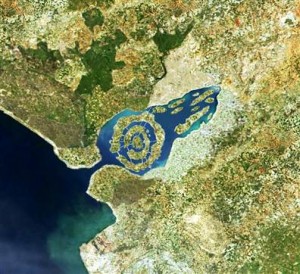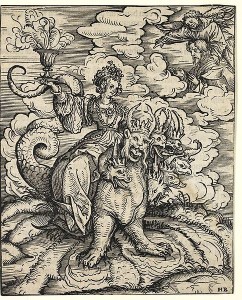 I’m on a TGV from Paris to Monaco. The sun was out this morning and the Jardin de Tuileries was filled with homages in tulips to various still lifes at the Louvre. Two days ago, at the Musée de quai Branly—Jacques Chirac, I saw the Picasso Primitif exposition that showcased the influence of indigenous arts on Picasso’s work through the years, often by presenting statues from Africa or Papua New Guinea side-by-side with examples of Picasso’s efforts through the years. If you never made the connection between his cubism and the statuary of Chad (like me), it is eye opening. He wasn’t particularly culturally sensitive—like everyone else until at least the 1960s—because the fascinating people and their cultural works were largely aesthetic objects to him. If he was aware of the significance of particular pieces (and he might have been), it was something he rarely acknowledged or discussed. The photos that tie Picasso to the African statues are the primary thread of the exhibition, with each one, taken at his California atelier or in Paris or whatnot, inscribed by the curators with a dainty red circle or oval to highlight a grainy African statue lurking in the background. Sometimes they provide a blow-up in case you can’t quite make it out. It is only with a full Native American headdress given to Picasso by the actor Gary Cooper that we see him actively mugging for a camera and providing weight to the show’s theme. Then, next, Brigitte Bardot is leaning over him at the California studio and her cleavage renders the distant red oval uninteresting.
I’m on a TGV from Paris to Monaco. The sun was out this morning and the Jardin de Tuileries was filled with homages in tulips to various still lifes at the Louvre. Two days ago, at the Musée de quai Branly—Jacques Chirac, I saw the Picasso Primitif exposition that showcased the influence of indigenous arts on Picasso’s work through the years, often by presenting statues from Africa or Papua New Guinea side-by-side with examples of Picasso’s efforts through the years. If you never made the connection between his cubism and the statuary of Chad (like me), it is eye opening. He wasn’t particularly culturally sensitive—like everyone else until at least the 1960s—because the fascinating people and their cultural works were largely aesthetic objects to him. If he was aware of the significance of particular pieces (and he might have been), it was something he rarely acknowledged or discussed. The photos that tie Picasso to the African statues are the primary thread of the exhibition, with each one, taken at his California atelier or in Paris or whatnot, inscribed by the curators with a dainty red circle or oval to highlight a grainy African statue lurking in the background. Sometimes they provide a blow-up in case you can’t quite make it out. It is only with a full Native American headdress given to Picasso by the actor Gary Cooper that we see him actively mugging for a camera and providing weight to the show’s theme. Then, next, Brigitte Bardot is leaning over him at the California studio and her cleavage renders the distant red oval uninteresting.
I am writing daily about things I don’t fully understand but try to imbue with a sense of character, of interest, and even of humor.… Read the rest








